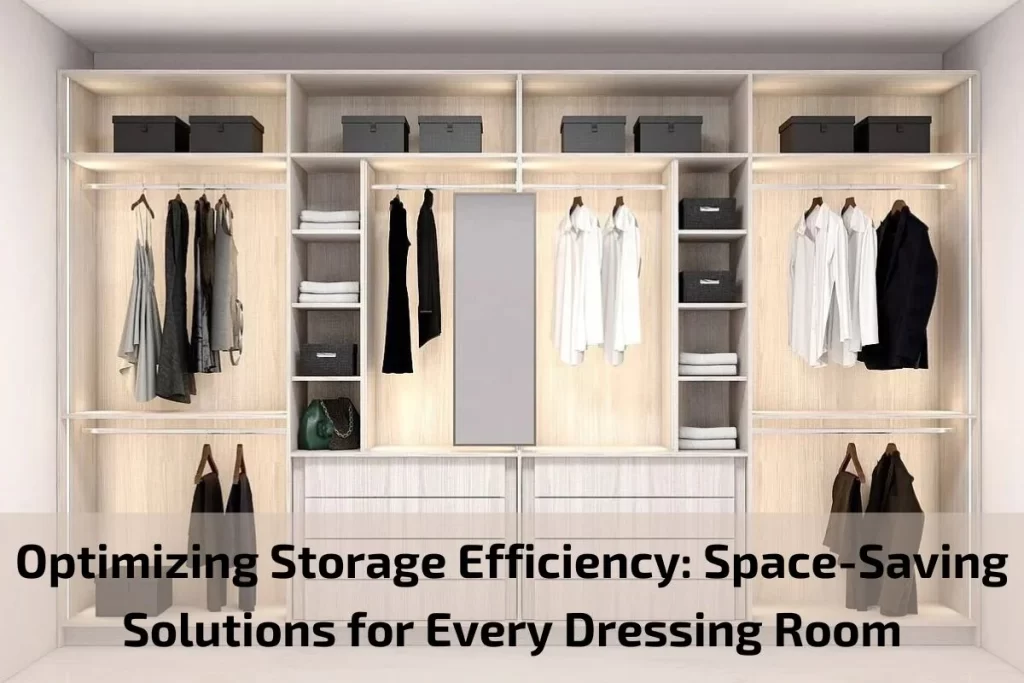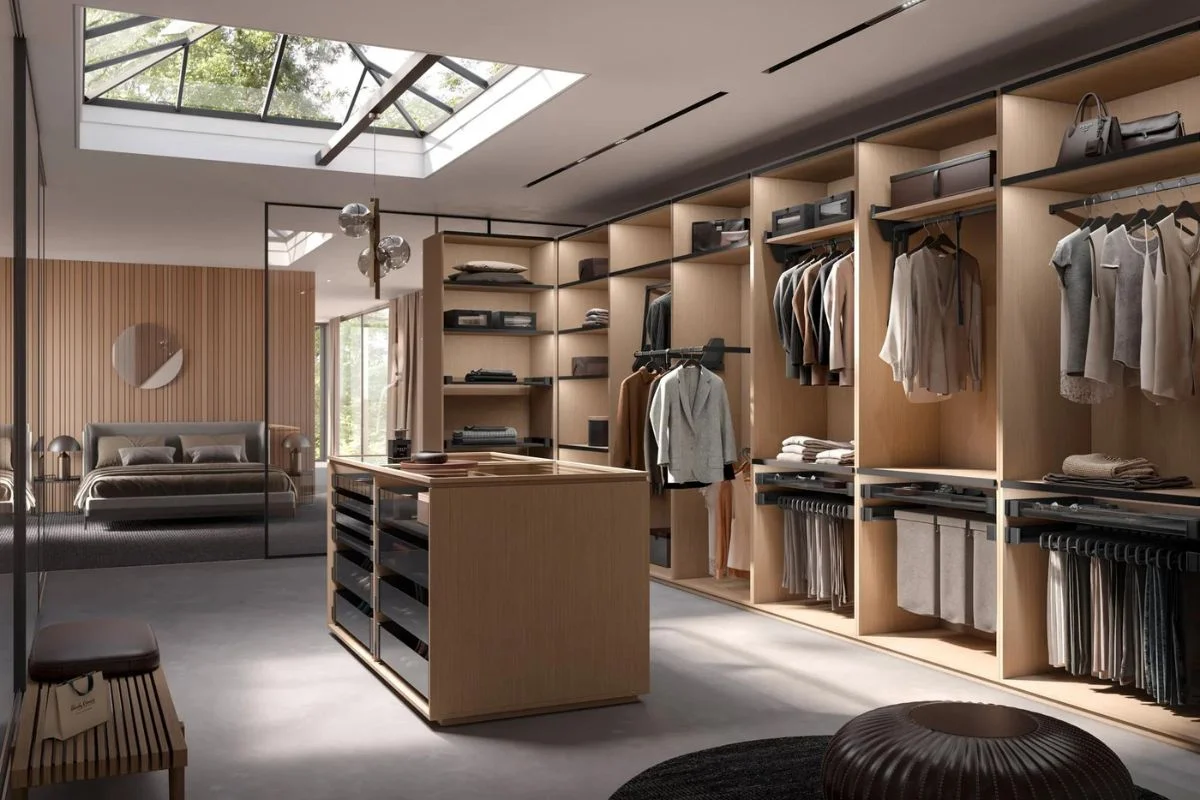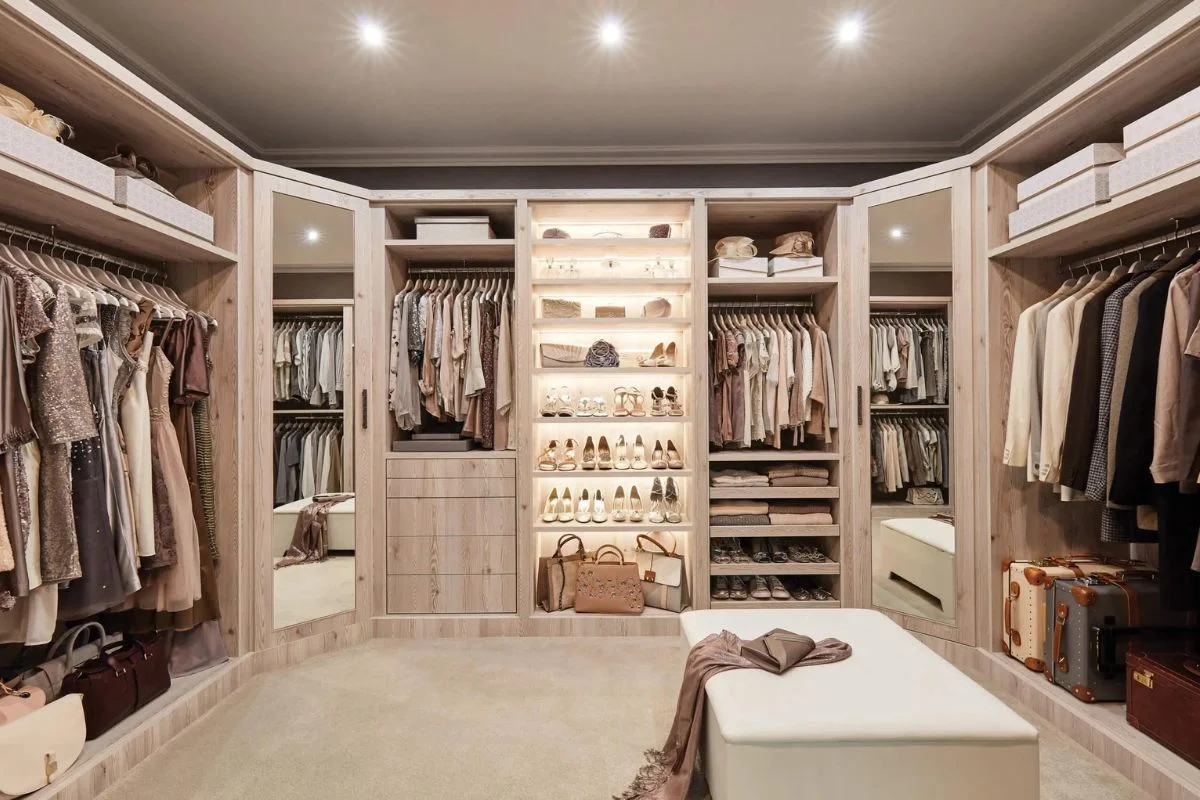
In the realm of home organization, the dressing room stands as a sanctuary for maintaining order amidst the chaos of everyday life. Yet, even in this coveted space, the challenge of optimizing storage efficiency looms large. Whether your dressing room is spacious or compact, the quest for effective storage solutions remains a constant priority.
In this guide, we embark on a journey to explore innovative and space-saving solutions tailored to every dressing room, regardless of size or layout. From ingenious storage hacks to clever organizational systems, we delve into strategies aimed at maximizing storage efficiency while maintaining the allure and functionality of your dressing room.
Join us as we unravel the secrets to transforming your dressing room into a haven of order and elegance, where every garment, accessory, and belonging finds its rightful place. Whether you’re embarking on a complete dressing room overhaul or seeking simple yet effective storage solutions, this guide is your roadmap to achieving storage efficiency in style.
Functional Efficiency: Dressing room storage plays a pivotal role in ensuring functional efficiency within your living space. An organized dressing room allows for easy access to clothing, accessories, and personal items, streamlining your daily routine and saving valuable time.
Preservation of Wardrobe: Proper storage helps preserve the condition of your wardrobe items. By providing designated spaces for different types of clothing and accessories, you can prevent wrinkles, creases, and damage caused by improper handling or overcrowding.
Enhanced Visual Appeal: A well-organized dressing room enhances the visual appeal of your living space. Neatly arranged clothing, shoes, and accessories create a sense of order and elegance, contributing to a more aesthetically pleasing environment.
Maximized Space Utilization: Dressing room storage solutions are essential for maximizing the use of available space, especially in smaller living quarters. Clever storage configurations and space-saving strategies help optimize every inch of your dressing room, allowing you to make the most of limited square footage.
Personalized Organization: Customized storage solutions cater to your specific needs and preferences, allowing you to organize your wardrobe according to your lifestyle, habits, and personal style. This personalized approach ensures that everything has its place, reducing clutter and promoting a sense of harmony and well-being.
Facilitates Decluttering: An efficiently organized dressing room facilitates regular decluttering and purging of unnecessary items. By providing clear visibility and easy access to your belongings, it encourages you to assess your wardrobe regularly and eliminate items that no longer serve you, promoting a more minimalist and mindful approach to consumption.

Assessing Wardrobe Composition: Begin by evaluating the composition of your wardrobe. Consider the types of clothing you own, such as formal wear, casual attire, workout gear, and seasonal items. This assessment will help determine the amount and type of storage space needed for different categories of clothing.
Analyzing Accessories: Take stock of your accessories, including shoes, handbags, jewelry, belts, and scarves. Determine the quantity and variety of accessories you own and prioritize storage solutions that accommodate these items effectively.
Considering Daily Routine: Reflect on your daily routine and lifestyle habits. Are you someone who prefers to hang most of your clothing, or do you prefer folding items? Do you frequently change outfits throughout the day, necessitating quick and easy access to various garments? Understanding your daily habits will inform the layout and organization of your dressing room storage.
Accounting for Specialized Needs: Consider any specialized storage requirements based on your hobbies, profession, or personal interests. For example, if you are an avid collector of hats or handbags, you may need dedicated storage solutions to protect and display these items properly.
Factoring in Preferences and Aesthetics: Take into account your preferences in terms of storage aesthetics and functionality. Do you prefer open shelving for easy visibility, or do you prefer concealed storage options to maintain a streamlined appearance? Additionally, consider the overall design style of your dressing room and ensure that storage solutions complement the aesthetic while meeting practical needs.
Anticipating Future Growth: Plan for future growth and changes in your wardrobe by incorporating flexible storage solutions that can adapt to evolving needs. Leave room for expansion and modification as your lifestyle, preferences, and fashion choices may evolve over time.
Repurposing Household Items: Look around your home for items that can be repurposed for dressing room storage. For example, use decorative baskets or crates as storage bins for shoes or accessories. Old bookshelves or cabinets can be refurbished and transformed into stylish storage units for folded clothing or display pieces.
Customized Closet Organizers: Create customized closet organizers using readily available materials such as tension rods, wire baskets, and hooks. Install tension rods between walls or shelves to create additional hanging space for clothing or accessories. Utilize wire baskets and hooks to organize scarves, belts, and jewelry in an organized manner.
DIY Shelving Solutions: Build your own shelving units using inexpensive materials such as plywood, brackets, and dowels. Customize the size and configuration of shelves to fit your dressing room space and storage needs. Paint or stain the shelves to match your decor and add a personal touch to your storage solution.
Space-Saving Hacks: Implement space-saving hacks to maximize storage in small dressing rooms. Utilize the back of doors for hanging organizers or shoe racks. Install hooks on walls or the back of closet doors to hang bags, hats, or accessories. Consider using slimline hangers to optimize hanging space and reduce clutter.
Upcycling Furniture: Give old furniture a new lease on life by upcycling it into functional dressing room storage. Repaint or refinish old dressers, cabinets, or wardrobes to match your decor and create stylish storage solutions. Add decorative knobs or handles for a personalized touch.
Budget-Friendly Storage Solutions: Explore budget-friendly storage solutions available at discount stores, thrift shops, or online marketplaces. Look for affordable storage bins, baskets, and organizers that fit your dressing room space and storage requirements. Mix and match different pieces to create a cohesive and functional storage system without breaking the bank.
DIY Closet Dividers: Create DIY closet dividers using cardboard, fabric, or foam board. Cut dividers to size and insert them between clothing items to keep shelves and drawers organized. Label dividers for easy identification of different clothing categories or sizes.

Regular Cleaning and Dusting: Schedule regular cleaning sessions to keep your dressing room storage areas free from dust and debris. Dust shelves, drawers, and other storage surfaces using a microfiber cloth or a soft brush. Wipe down any spills or stains promptly to prevent them from becoming permanent.
Clothing Rotation: Rotate your clothing seasonally to ensure that items are worn evenly and to prevent fabric deterioration from prolonged storage. Store off-season clothing in airtight containers or garment bags to protect them from dust, moisture, and pests.
Inspecting for Wear and Tear: Periodically inspect your storage furniture and accessories for signs of wear and tear. Check for loose screws, damaged hinges, or sagging shelves, and address any issues promptly to prevent further damage and maintain structural integrity.
Reorganization and Decluttering: Take the opportunity to reorganize and declutter your dressing room storage on a regular basis. Remove items that you no longer use or need, and donate or recycle them responsibly. Reevaluate your storage system’s efficiency and make adjustments as necessary to accommodate changes in your wardrobe or lifestyle.
Maintaining Organization Systems: Preserve the effectiveness of your organization systems by adhering to designated storage areas and maintaining orderliness. Return items to their designated places after each use to prevent clutter from accumulating. Consider using storage bins, baskets, or dividers to keep smaller items organized within drawers and shelves.
Preventing Moisture Damage: Protect your clothing and accessories from moisture damage by maintaining proper ventilation and humidity levels in your dressing room. Use moisture-absorbing products such as silica gel packets or dehumidifiers to prevent mold and mildew growth. Avoid storing damp or wet clothing in enclosed spaces to prevent musty odors and fabric damage.
Inspection of Clothing: Regularly inspect your clothing for signs of damage or deterioration, such as moth holes, stains, or fading. Address any issues promptly by laundering or repairing garments as needed. Consider investing in garment covers or protective bags to safeguard delicate or valuable clothing items from damage.
In conclusion, dressing room storage is a crucial aspect of creating a functional, organized, and aesthetically pleasing living space. By carefully assessing your wardrobe needs, lifestyle habits, and preferences, you can identify storage solutions that cater to your individual requirements and enhance your daily routine.

Dressing Room Dubai offers a curated blend of luxury fashion and style, making it the ultimate destination for discerning shoppers in the heart of the UAE. Explore our handpicked collection of exquisite clothing, accessories, and more, and elevate your wardrobe to new heights of elegance and sophistication.
Risala Furniture LLC 9 24 A street, Al Quoz 1 Dubai – United Arab Emirates

Abu Dhabi Island, Al Salam Street Behind Abu Dhabi Municipality And FAB Bank Heirs. Of Ibrahim G. Sultan Al Suwaidi Building ONLINE FURNITURE – Showroom no. S2 Abu Dhabi
 Call Now ButtonOUR LOCATION
Call Now ButtonOUR LOCATION